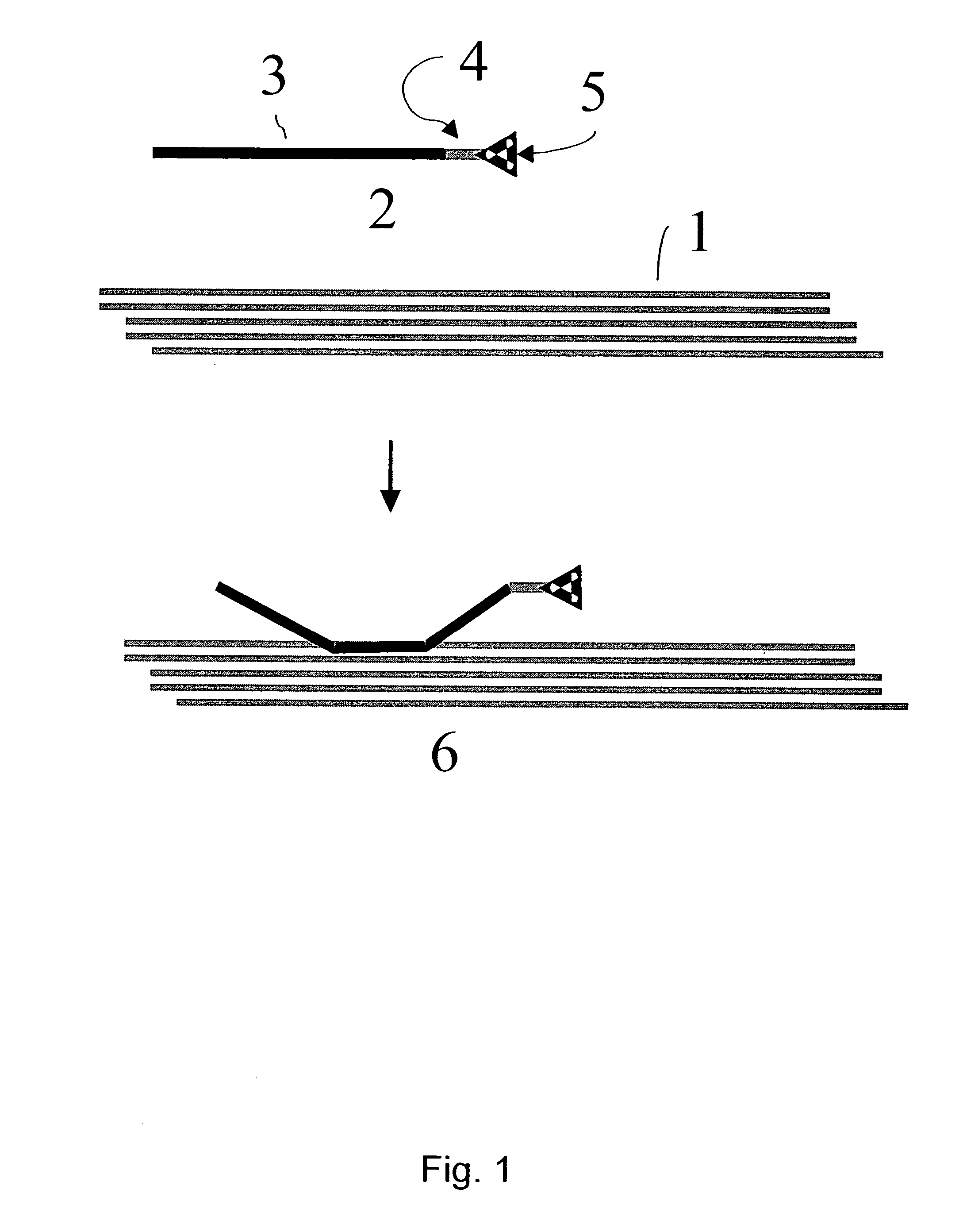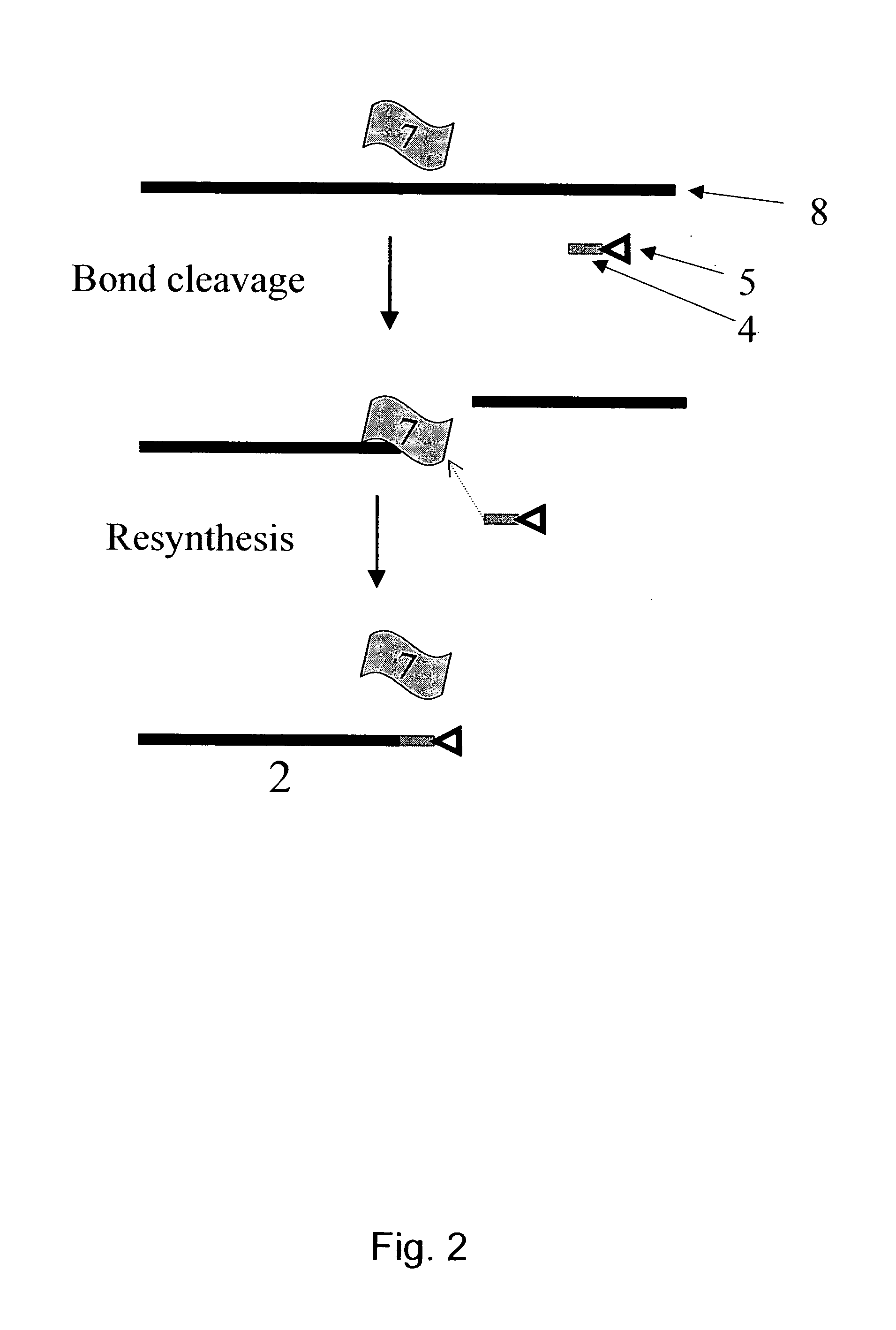Mehtod for the modification of polymeric carbohydrate materials
a technology of carbohydrate materials and mehtod, which is applied in the field of mehtod for the modification of polymeric carbohydrate materials, can solve the problems of loss of fibre structure and properties, limited use of composite materials, and lack of current available technology for cellulose fibre surface modification by physical and chemical treatments
- Summary
- Abstract
- Description
- Claims
- Application Information
AI Technical Summary
Problems solved by technology
Method used
Image
Examples
example 1
[0109] Extraction of XET from Cauliflower
[0110] The extraction of cauliflower was prepared by homogenizing the cauliflower florets in ice-cold citrate buffer (0.35 M, pH 5.5 containing 10 mM CaCl.sub.2), and filtering the mixture through miracloth. The filtrate was diluted with ultrapure water (18 M.OMEGA..cm) until the conductivity of the solution was the same as that of 0.1 M ammonium acetate buffer pH 5.5. The solution was then gently stirred with SP-Fast Flow cation exchanger (Amersham Biosciences, Sweden) for 1 hour at 4.degree. C. The SP-FF gel was collected on a glass frit filter and was washed with 0.1 M ammonium acetate, pH 5.5, until the filtrate was clear. The gel was packed into a column and bound proteins were eluted with a linear gradient of 0 to 1.0 M NaCl in 0.1 M ammonium acetate, pH 5.5, over 10 column volumes. Fractions containing XET activity were pooled and mixed with ammonium sulfate (1 M). The sample was applied to a Resource-ISO column (1 ml, Amersham Bioscie...
example 2
[0111] Extraction of XET from the Cell Suspension Culture of Hybrid Aspen, Populus Tremula X Tremuloides Mich.
[0112] Poplar XET was extracted by homogenizing material from a granular cell culture in ice-cold citrate buffer (0.35 M, pH 5.5 containing 10 mM CaCl.sub.2), stirring the mixture for 2 hours at 4.degree. C., and filtering it through miracloth. The filtrate was diluted with ultrapure water (18 M.OMEGA..cm) until the conductivity of the solution was the same as that of 0.1 M ammonium acetate buffer pH 5.5. The solution was then gently stirred with SP-Fast Flow cation exchanger (Amersham Biosciences, Sweden) for 1 hour at 4.degree. C. The SP-Trisacryl gel was collected and washed with 0.1 M ammonium acetate, pH 5.5 through a glass frit filter until the filtrate was clear. The gel was packed into a column and bound proteins were eluted with a linear gradient of 0.0 to 1.0 M NaCl in 0.1 M ammonium acetate, pH 5.5, over 10 column volumes. Fractions containing XET activity were po...
example 3
[0113] Purification of Recombinant XET from Pichia Pastoris Cultivation
[0114] Cells from Pichia pastoris cultures transformed with the genetic material encoding XET (see examples 4. and 5.) generally showed the highest XET activity in the culture medium after 3 days of methanol induction. These yeast cells were harvested by centrifugation and the culture media were further filtrated through a 0.45 .mu.m filter and then concentrated and desalted by ultra-filtration. The XET was purified by two step cation exchange chromatography. The concentrated culture filtrate (in a buffer of 0.1 M ammonium acetate pH 5.5) was first applied to an SP-trisacryl column and then eluted by a linear gradient of 0 to 1 M NaCl in 0.1 M ammonium acetate pH 5.5. The fractions containing XET activity were pooled desalted to 0.1 M ammonium acetate pH 5.5, and applied to a Resource S column, subsequently eluted by the same salt linear gradient as used in the first step cation exchange chromatography. The homog...
PUM
| Property | Measurement | Unit |
|---|---|---|
| Fraction | aaaaa | aaaaa |
| Fraction | aaaaa | aaaaa |
| Fraction | aaaaa | aaaaa |
Abstract
Description
Claims
Application Information
 Login to View More
Login to View More - R&D
- Intellectual Property
- Life Sciences
- Materials
- Tech Scout
- Unparalleled Data Quality
- Higher Quality Content
- 60% Fewer Hallucinations
Browse by: Latest US Patents, China's latest patents, Technical Efficacy Thesaurus, Application Domain, Technology Topic, Popular Technical Reports.
© 2025 PatSnap. All rights reserved.Legal|Privacy policy|Modern Slavery Act Transparency Statement|Sitemap|About US| Contact US: help@patsnap.com



